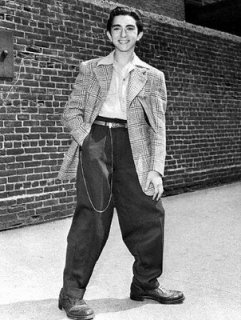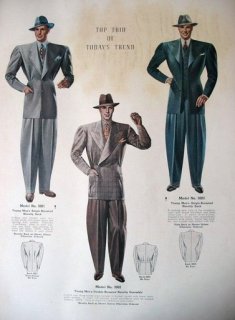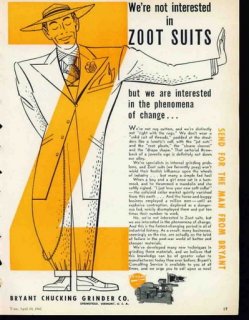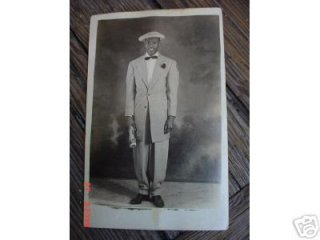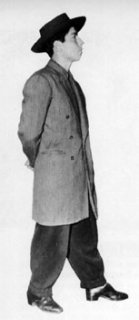From Wikipedia:
The Zoot Suit Riot of '43
------------------------------------------------------------------------
Nowadays when we hear the phrase "Zoot Suit Riot" we undoubtedly think of big band swing music and flashy dancing, but there is a little more to it than that. What indeed was this Zoot Suit riot? Who played the roles, and what was happening in LA in 1943?
Background:
The 1940's was a period in American history filled with social unrest and racial violence. After the attack on Pearl Harbor, the United States, left paranoid and prejudiced, declared war so to speak, on Japanese Americans. A country that prides itself on freedom and opportunity took it upon itself to incarcerate over 100,000 Japanese people, regardless of whether or not they were American citizens. By the middle of 1942, completely innocent people many of whom had never been to Japan were thrown into American concentration camps. An event not glamorized in our elementary and high school text books. The west coast became an area of high racial tension, which was ultimately felt throughout the country (Brown 448). It wasn't until 1988 that the United States finally gave an official apology to these American people.
Tension continued to escalate as the decade rolled on. Los Angeles 1943, was no different, it was here that racial resentment grew between Mexican-Americans and whites in California. At this time LA was experiencing an agriculture labor shortage, and requested that around 200,000 Mexican laborers be sent to work in California. Now, much more so than today, Zoot Suits were in style, it was cool to have a zoot suit. They were worn typically by the Mexican American youth in California, and it would be pretty common to find groups of these kids hanging out in their "zoot suit" gangs, and like the greasers of the fifties, they too were seen as a threat to the culture, not only for being foreign, but for going against norm.
As almost a response to an article written describing an event where a group of Mexicans beat up American soldiers, riots broke out. That was the last draw; now people had a reason to uleash their feelings of resentment and hatred they had for so long held back. "Thousands of marines, sailors, soldiers, and civilians imposed a reign of terror on Mexican-American neighborhoods..." (Brown, 455). In the riots that followed, between these pechuccios, the zooters, and the whites, the American soldiers beat up the zooters, destroyed their suits, the symbol of their status, and cut their long hair(Smith lecture). It wasn't until the government saw the riots as a possible threat to their image, as seen by the Mexican ambassador, that it declared LA "off-limits to navy personel" (Freeman, 455)
When the LAPD showed up to stop the riot, most of the zooters were arrested, and in light of the situation, the City Council made the wearing of a Zoot Suit a misdemeanor. The soldiers were praised for their actions, and the riots and hatred that had found an outlet in LA moved on and was felt by much of the rest of the country as well (Brown, 455).
-Al Waxman describes a city in turmoil.
"Four boys came out of a pool hall. They were wearing zoot-suits that have become a symbol of a fighting flag. Police ordered them into arrest cars. One refused. He asked: "Why am I being arrested?" The police officer answered with three swift blows of the night-stick across the boy's head and he went down...he was one legged with a wooden limb. Maybe the officer didn't know he was attacking a cripple...Farther down the street the men stopped a streetcar, forcing the motorman to open the door and proceeded to inspect the clothing of the male passengers, "We're looking for zoot suits to burn," they shouted" (Brown, 455)
------------------------------------------------------------------------
Brown, Joshuwa ed. Who Built America?Working people and the nation's economy, politics, culture, and society New York. 1992
Smith, Dr. Suzanne, History 122 lecture, Mar 31,1999

A Zoot suit (also spelled Zuit Suit) is a suit with high-waisted, wide-legged, tight-cuffed pegged trousers (called tramas) and a long coat (called the carlango) with wide lapels and wide padded shoulders. This style of clothing was popularized by Hispanics, Italian Americans, African Americans, and Filipino Americans during the late 1930s and 1940s
...
Often zoot suiters wear a felt hat with a long feather (called a tapa or tanda) and pointy, French-style shoes (called calcos). A young Malcolm X described the zoot suit as: "a killer-diller coat with a drape shape, reet pleats and shoulders padded like a lunatic's cell." Zoot suits usually featured a watch chain dangling from the belt to the knee or below, then back to a side pocket.
Zoot suits were for special occasions – such as a dance or a birthday party. The amount of material and tailoring required made them luxury items. Many young people wore a more moderate version of the "extra-bagged" pants or styled their hair in the signature "duck tail".
The oversized suit was an extravagant personal style and a declaration of freedom and auto-determination; although many people still consider it a "rebellious garment of the era."
The Zoot Suit Riot of '43
------------------------------------------------------------------------
Nowadays when we hear the phrase "Zoot Suit Riot" we undoubtedly think of big band swing music and flashy dancing, but there is a little more to it than that. What indeed was this Zoot Suit riot? Who played the roles, and what was happening in LA in 1943?
Background:
The 1940's was a period in American history filled with social unrest and racial violence. After the attack on Pearl Harbor, the United States, left paranoid and prejudiced, declared war so to speak, on Japanese Americans. A country that prides itself on freedom and opportunity took it upon itself to incarcerate over 100,000 Japanese people, regardless of whether or not they were American citizens. By the middle of 1942, completely innocent people many of whom had never been to Japan were thrown into American concentration camps. An event not glamorized in our elementary and high school text books. The west coast became an area of high racial tension, which was ultimately felt throughout the country (Brown 448). It wasn't until 1988 that the United States finally gave an official apology to these American people.
Tension continued to escalate as the decade rolled on. Los Angeles 1943, was no different, it was here that racial resentment grew between Mexican-Americans and whites in California. At this time LA was experiencing an agriculture labor shortage, and requested that around 200,000 Mexican laborers be sent to work in California. Now, much more so than today, Zoot Suits were in style, it was cool to have a zoot suit. They were worn typically by the Mexican American youth in California, and it would be pretty common to find groups of these kids hanging out in their "zoot suit" gangs, and like the greasers of the fifties, they too were seen as a threat to the culture, not only for being foreign, but for going against norm.
As almost a response to an article written describing an event where a group of Mexicans beat up American soldiers, riots broke out. That was the last draw; now people had a reason to uleash their feelings of resentment and hatred they had for so long held back. "Thousands of marines, sailors, soldiers, and civilians imposed a reign of terror on Mexican-American neighborhoods..." (Brown, 455). In the riots that followed, between these pechuccios, the zooters, and the whites, the American soldiers beat up the zooters, destroyed their suits, the symbol of their status, and cut their long hair(Smith lecture). It wasn't until the government saw the riots as a possible threat to their image, as seen by the Mexican ambassador, that it declared LA "off-limits to navy personel" (Freeman, 455)
When the LAPD showed up to stop the riot, most of the zooters were arrested, and in light of the situation, the City Council made the wearing of a Zoot Suit a misdemeanor. The soldiers were praised for their actions, and the riots and hatred that had found an outlet in LA moved on and was felt by much of the rest of the country as well (Brown, 455).
-Al Waxman describes a city in turmoil.
"Four boys came out of a pool hall. They were wearing zoot-suits that have become a symbol of a fighting flag. Police ordered them into arrest cars. One refused. He asked: "Why am I being arrested?" The police officer answered with three swift blows of the night-stick across the boy's head and he went down...he was one legged with a wooden limb. Maybe the officer didn't know he was attacking a cripple...Farther down the street the men stopped a streetcar, forcing the motorman to open the door and proceeded to inspect the clothing of the male passengers, "We're looking for zoot suits to burn," they shouted" (Brown, 455)
------------------------------------------------------------------------
Brown, Joshuwa ed. Who Built America?Working people and the nation's economy, politics, culture, and society New York. 1992
Smith, Dr. Suzanne, History 122 lecture, Mar 31,1999


Last edited by a moderator:


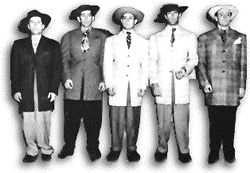

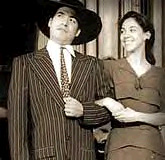

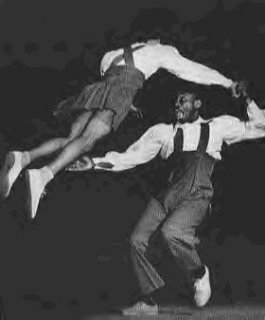

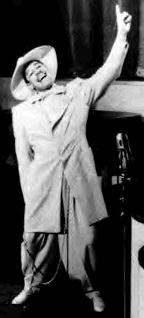
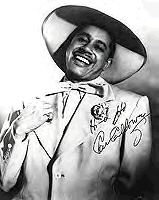
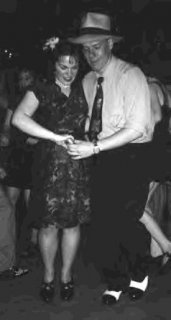
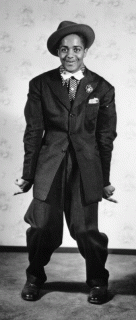
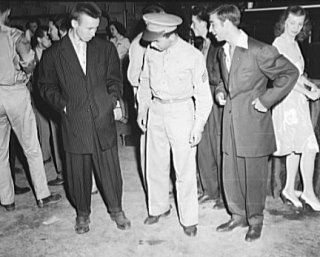
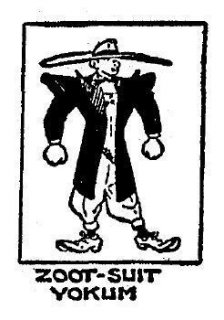
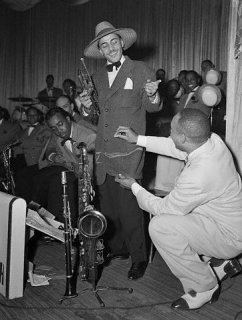
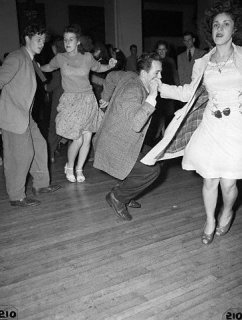
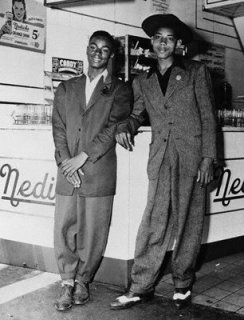
 .. your memory is not half bad.. this thread is a copied/reworked thread from Personal Style
.. your memory is not half bad.. this thread is a copied/reworked thread from Personal Style